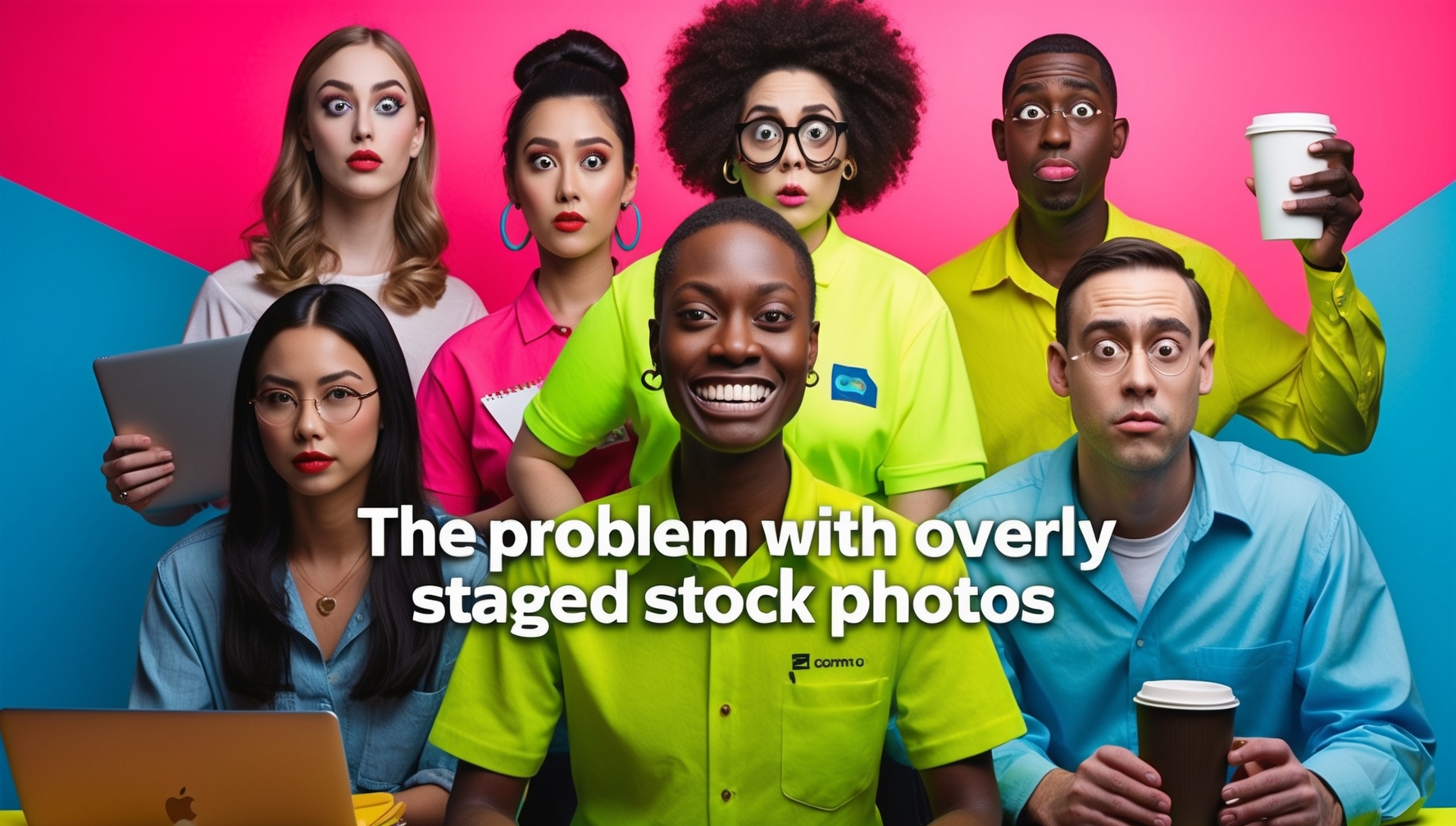Stock photos are a popular tool for enhancing visual content, but overly staged images can often fall short of meeting the needs of modern content creators. While these photos may seem like a quick fix, they come with their own set of problems that can impact the effectiveness and authenticity of your project. Here’s a look at the key issues associated with overly staged stock photos and how to address them.
1. Lack of Authenticity
Issue: Overly staged stock photos often feel artificial and contrived. Common scenarios, such as overly posed business meetings or unrealistic stock photo scenarios, can come across as insincere.
Impact: Lack of authenticity can make your content seem unrelatable or disconnected from real-world experiences, reducing engagement and trust with your audience.
Solution: Opt for stock images that depict genuine interactions and natural settings. Authentic visuals resonate better with viewers and enhance the credibility of your content.
2. Clichéd Imagery
Issue: Many overly staged stock photos rely on clichés, such as the classic handshake or people in suits smiling in front of a graph. These images have become overused and can feel predictable.
Impact: Clichéd imagery can make your content appear stale or uninspired, failing to capture the attention of your audience or convey a unique message.
Solution: Choose images that offer fresh perspectives and avoid overused scenarios. Look for stock photos that present new or unconventional ideas relevant to your content.
3. Unnatural Poses and Expressions
Issue: Overly staged photos often feature unnatural poses and forced expressions, such as people standing rigidly or giving awkward smiles.
Impact: Unnatural poses and expressions can detract from the professionalism of your content and make it appear less genuine.
Solution: Select stock photos with relaxed, natural poses and expressions. Authentic body language and genuine emotions will make your visuals more relatable and engaging.
4. Lack of Relevance
Issue: Staged stock photos may not always align with the specific context or message of your project. Generic images can fail to accurately represent your intended topic or audience.
Impact: Irrelevant images can confuse viewers or dilute the message, making it harder for your content to resonate with its target audience.
Solution: Ensure that the stock images you choose are closely related to the topic and message of your content. Look for images that accurately reflect the context and purpose of your project.
5. Ineffective Visual Communication
Issue: Overly staged stock photos can sometimes hinder effective visual communication by focusing on aesthetics rather than conveying a clear message or idea. Lighting issues in stock images can further exacerbate this problem, making the visuals less impactful.
Impact: Ineffective visual communication can reduce the impact of your content and fail to convey the intended message to your audience.
Solution: Prioritize stock images that clearly communicate your message and support the overall narrative of your content. Choose images that enhance understanding and engagement.
6. Limited Flexibility
Issue: Staged stock photos often have a specific look or theme that may not fit with various design elements or content formats, limiting their versatility.
Impact: Limited flexibility can restrict how you use the image across different platforms and media, affecting the coherence of your content.
Solution: Select versatile stock images that can be easily adapted to different contexts and design styles. Look for images with a neutral or adaptable aesthetic that works well with your content.
7. Risk of Overexposure
Issue: Staged stock photos are often widely used, which can lead to overexposure and make your content blend in with others using similar images.
Impact: Overexposure can reduce the uniqueness of your content and make it harder to stand out in a crowded visual landscape.
Solution: Choose less commonly used stock images or invest in custom photography to ensure your visuals are distinctive and original.
8. Misleading Representations
Issue: Some overly staged stock photos may misrepresent certain scenarios or demographics, leading to misleading stock photo contexts that do not align with reality.
Impact: Misleading representations can affect the credibility of your content and may not resonate with a diverse audience.
Solution: Be mindful of the accuracy and inclusivity of stock images. Select photos that represent real-life scenarios and diverse perspectives appropriately.
9. Disconnection from Brand Identity
Issue: Overly staged stock photos may not align with your brand’s identity or messaging, creating a disconnect between your visual content and brand values.
Impact: Disconnection from brand identity can weaken brand recognition and impact the effectiveness of your marketing efforts.
Solution: Choose stock images that reflect your brand’s tone, style, and values. Ensure that the visuals are consistent with your brand identity and messaging.
10. Increased Editing Time
Issue: Staged stock photos may require extensive editing to fit your project’s needs, such as altering poses, expressions, or backgrounds.
Impact: Increased editing time can lead to higher costs and delays, potentially impacting project timelines and budgets.
Solution: Select stock images that require minimal editing and align closely with your project’s requirements. This will save time and resources while ensuring a smoother workflow.
Conclusion
Overly staged stock photos can present various challenges, including a lack of authenticity, relevance, and versatility. These issues often stem from common composition errors in stock photos, which can make the images feel artificial or disconnected from the intended message. By opting for more genuine and relatable images, you can enhance the effectiveness and appeal of your content, ensuring that your stock photos support rather than hinder your message and overall project goals.
